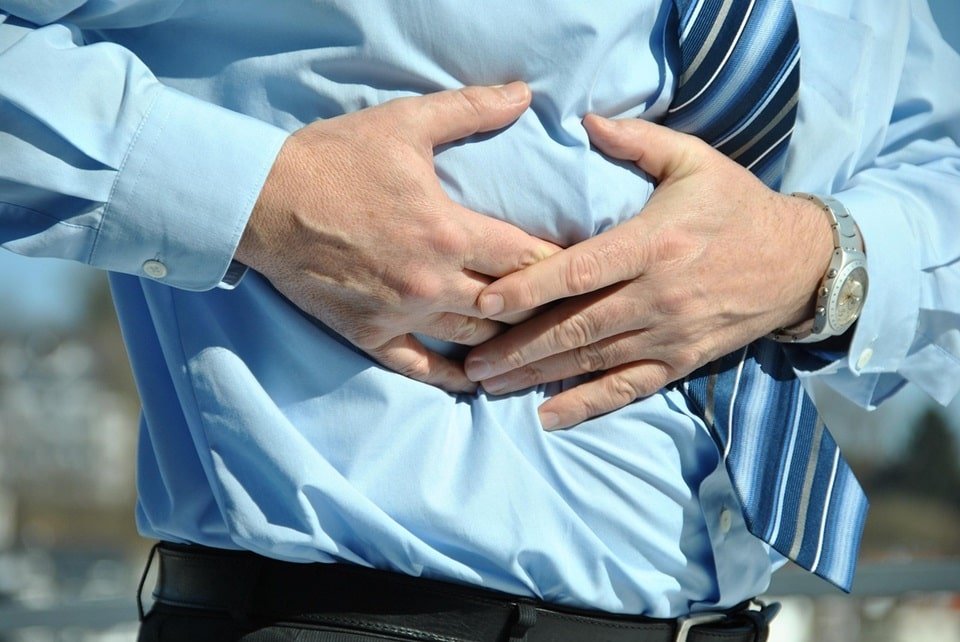Food Poisoning: Causes, Symptoms, Spread, Prevention and Treatment
Food poisoning is one of the most common illnesses worldwide, caused by eating or drinking contaminated food or beverages. Anyone can be affected, from young children and elderly adults to healthy individuals, and symptoms can range from mild discomfort to severe, life-threatening conditions. Understanding the various causes of food poisoning, how it spreads, the symptoms to watch for, and how to prevent it is essential for maintaining good health. This article delves deep into each of these aspects and offers practical advice to keep you and your loved ones safe.
What Is Food Poisoning?
Food poisoning, also known as foodborne illness, occurs when harmful microorganisms such as bacteria, viruses, parasites, or toxins enter the body through contaminated food or drinks. These pathogens can cause inflammation and damage to the digestive tract, triggering a range of symptoms. The most common culprits include Salmonella, Escherichia coli (E. coli), Campylobacter, Listeria, and Norovirus, but many others also contribute.
In some cases, toxins produced by bacteria like Staphylococcus aureus or Clostridium botulinum can cause severe illness even if the bacteria are no longer present. These toxins resist heat and cooking, making proper food handling and storage critical.
The global impact of foodborne illness is significant. The World Health Organization estimates that over 600 million people fall ill each year, leading to 420,000 deaths worldwide. This highlights the importance of awareness and prevention measures.
Authoritative sources for more information: CDC Food Safety, WHO Food Safety.
Major Causes of Food Poisoning
The causes of food poisoning are diverse, but most cases fall into these broad categories: biological contamination (bacteria, viruses, parasites), chemical contamination (toxins, pesticides), and improper food handling and storage.
Bacterial Contamination
Bacteria are responsible for the majority of food poisoning cases. They can grow rapidly in food that is left at unsafe temperatures, producing toxins or directly infecting the body.
- Salmonella: Commonly found in raw or undercooked poultry, eggs, and sometimes fruits and vegetables contaminated during processing or handling.
- Escherichia coli (E. coli): Some strains produce toxins leading to severe illness; often linked to undercooked ground beef, raw milk, and contaminated water.
- Campylobacter: Frequently found in raw or undercooked poultry and unpasteurized milk, it is a leading cause of bacterial diarrhea worldwide.
- Listeria monocytogenes: This bacterium can grow at refrigeration temperatures and is commonly found in deli meats, soft cheeses, and unpasteurized dairy products.
These bacteria multiply quickly if food is stored improperly, particularly between 40°F (4°C) and 140°F (60°C), known as the “danger zone.” Proper refrigeration and cooking are essential to prevent bacterial growth.
Viral Contamination
Viruses are a significant cause of foodborne illness, especially in outbreaks involving many people. Unlike bacteria, viruses require living hosts to multiply and do not grow in food but can survive on contaminated surfaces or in food and water.
- Norovirus: The leading cause of foodborne outbreaks, norovirus is highly contagious and spreads easily through contaminated food, water, or close contact with infected individuals.
- Hepatitis A: This virus affects the liver and is transmitted mainly through contaminated food or water, particularly in areas with poor sanitation.
Preventing viral contamination focuses heavily on personal hygiene, especially thorough handwashing by food handlers and avoiding preparing food when sick.
Parasitic Infections
Parasites, though less common than bacteria and viruses, still pose a risk, particularly in areas with inadequate sanitation. Parasites may live in contaminated water or undercooked meat and fish.
- Giardia lamblia: Causes giardiasis, often spread through contaminated water.
- Cryptosporidium: A parasite found in contaminated water, resistant to some common disinfectants.
- Toxoplasma gondii: Usually contracted through undercooked meat or exposure to cat feces; dangerous for pregnant women.
Toxins and Chemical Contaminants
Food poisoning can also result from chemical toxins produced by bacteria or introduced through external contaminants.
- Staphylococcal enterotoxins: Produced by Staphylococcus aureus, these toxins cause rapid-onset vomiting and are heat-resistant.
- Botulinum toxin: Produced by Clostridium botulinum, it causes botulism, a rare but potentially fatal illness linked to improperly canned foods.
- Mushroom toxins: Certain wild mushrooms contain deadly toxins; ingestion can cause serious neurological and gastrointestinal symptoms.
- Pesticides and heavy metals: Accidental contamination with these chemicals can cause acute or chronic poisoning.
Cross-Contamination
Cross-contamination is a frequent cause of food poisoning, occurring when harmful microorganisms transfer from one food or surface to another. Common scenarios include:
- Using the same cutting board or utensils for raw meat and vegetables without cleaning them thoroughly.
- Storing raw meat above ready-to-eat foods in the refrigerator, allowing juices to drip and contaminate other items.
- Improper handwashing after handling raw foods.
Proper hygiene and kitchen practices are essential to avoid cross-contamination.
Symptoms and Complications
The symptoms of food poisoning vary depending on the contaminant, dose, and individual factors such as age and immune status. Symptoms usually appear within hours to days after consuming contaminated food.
- Nausea and an urge to vomit.
- Vomiting to expel toxins or pathogens.
- Diarrhea, which can be watery or bloody in severe cases.
- Abdominal cramps and pain.
- Fever, often mild but can be high in severe infections.
- Headaches and general weakness or fatigue.
- Dehydration, a serious concern especially for children and elderly, characterized by dry mouth, dizziness, and reduced urination.
Severe complications can include kidney failure (hemolytic uremic syndrome from E. coli), invasive infections (Listeriosis), or neurological symptoms (botulism). Most healthy adults recover fully within a few days, but medical attention is necessary if symptoms worsen or persist.
How Food Poisoning Spreads
Food poisoning spreads primarily through contaminated food and water but also via person-to-person contact and contaminated surfaces. Key routes include:
- Consumption of contaminated food or water: Eating undercooked meats, raw seafood, unwashed produce, or drinking untreated water.
- Cross-contamination: Transferring pathogens from raw foods to ready-to-eat foods via utensils, hands, or surfaces.
- Person-to-person contact: Especially relevant for viruses like norovirus, which spread rapidly in crowded settings.
- Improper food storage: Leaving food at room temperature too long allows bacteria to multiply.
Good food safety practices, including hand hygiene, kitchen cleanliness, and correct food storage, help prevent spread.
Prevention: Practical Kitchen Rules
The most effective way to prevent food poisoning is by following proper food safety practices consistently. The basic principles are often summarized as the 4 Cs: Clean, Cook, Chill, and Separate.
Cleanliness
- Wash hands thoroughly with soap and water before and after handling food, after using the bathroom, and after touching garbage or pets.
- Clean kitchen surfaces, utensils, and cutting boards with hot, soapy water after preparing raw foods.
- Wash fruits and vegetables thoroughly under running water, even if you plan to peel them.
- Regularly clean refrigerator shelves and drawers to prevent buildup of bacteria and spills.
Separation
- Use separate cutting boards and utensils for raw meat, poultry, seafood, and ready-to-eat foods like fruits and vegetables.
- Store raw meats in sealed containers at the bottom of the refrigerator to prevent their juices contaminating other foods.
- Avoid mixing cooked and raw foods during preparation or storage.
Cooking
- Cook foods to safe internal temperatures; use a food thermometer to verify.
- Recommended temperatures include 160°F (71°C) for ground beef, 165°F (74°C) for poultry, and 145°F (63°C) for whole cuts of meat followed by rest time.
- Avoid consuming raw or undercooked eggs, seafood, and meats.
- Ensure leftovers are reheated thoroughly.
Chilling
- Refrigerate perishable foods within two hours; reduce this to one hour if ambient temperature is above 90°F (32°C).
- Keep your refrigerator at 40°F (4°C) or below.
- Store leftovers in shallow, airtight containers to allow quick cooling.
- Avoid overcrowding the refrigerator to ensure proper air circulation.
Be Careful with High-Risk Foods
- Avoid raw or undercooked seafood, meats, and eggs, especially if you are pregnant, elderly, or immunocompromised.
- Do not consume unpasteurized dairy products or juices.
- Discard canned foods that are bulging, leaking, or damaged as these may contain harmful bacteria like Clostridium botulinum.
- Be cautious when consuming food from street vendors or unfamiliar sources where hygiene standards may be uncertain.
Stay Informed About Food Recalls
- Regularly check for food recalls and safety alerts issued by government agencies like the USDA, FDA, or local health departments.
- Subscribe to newsletters or follow trusted websites to get timely updates.
- If you suspect a recalled product in your kitchen, do not consume it; dispose of it safely.
Food Poisoning Treatment and When to See a Doctor
Most cases of food poisoning resolve without medical intervention within a few days. However, managing symptoms properly and knowing when to seek medical care is important to avoid complications.
At-Home Care
- Hydration: Drink plenty of fluids such as water, oral rehydration solutions, or clear broths to prevent dehydration from vomiting and diarrhea.
- Rest: Allow your body to recover by getting sufficient rest.
- Diet: Gradually reintroduce bland foods like toast, rice, bananas, and applesauce as appetite returns.
- Avoid: Dairy, caffeine, alcohol, fatty, and spicy foods until fully recovered.
- Over-the-counter medications: Antidiarrheal medicines are generally not recommended for bacterial infections but may be used cautiously under medical advice.
When to See a Doctor
Seek immediate medical attention if you experience:
- Persistent vomiting or inability to keep fluids down for more than 24 hours.
- Signs of severe dehydration such as dizziness, dry mouth, little or no urination.
- High fever (above 101.5°F or 38.6°C).
- Blood in vomit or stool.
- Severe abdominal pain or cramping.
- Neurological symptoms such as blurred vision, muscle weakness, or difficulty speaking.
- If you are pregnant, elderly, very young, or have a weakened immune system and develop symptoms of food poisoning.
Diagnostic Tests and Treatments
Healthcare providers may order stool tests, blood tests, or imaging studies to identify the pathogen and assess severity. Treatment may include antibiotics for bacterial infections, antiparasitic medications for parasites, or supportive care in severe cases.
In rare but serious cases like botulism, hospitalization and antitoxin administration are critical.
Summary Table: Common Foodborne Pathogens and Their Sources
| Pathogen | Common Food Sources | Typical Symptoms | Incubation Period |
|---|---|---|---|
| Salmonella | Raw poultry, eggs, unpasteurized milk, fruits | Diarrhea, fever, abdominal cramps | 6–72 hours |
| Escherichia coli (E. coli O157:H7) | Undercooked ground beef, raw milk, contaminated water | Severe diarrhea (often bloody), abdominal pain | 1–10 days |
| Norovirus | Contaminated shellfish, salads, ready-to-eat foods | Vomiting, diarrhea, nausea | 12–48 hours |
| Listeria monocytogenes | Deli meats, soft cheeses, unpasteurized dairy | Fever, muscle aches, sometimes gastrointestinal symptoms | 1–4 weeks |
| Clostridium botulinum | Improperly canned foods | Blurred vision, muscle weakness, paralysis | 12–36 hours |
Final Thoughts
Food poisoning remains a significant public health concern globally, but with proper knowledge and food safety habits, it is largely preventable. Being mindful of the sources of contamination, practicing good hygiene, cooking foods thoroughly, and storing foods properly can dramatically reduce your risk.
Remember to stay alert for symptoms and take appropriate action if you or a family member become ill. In cases of severe symptoms or vulnerability, do not hesitate to seek medical care. Ultimately, safe food handling protects not just your health but that of your family and community.
For more detailed guidance, visit Food and Drug Administration.










